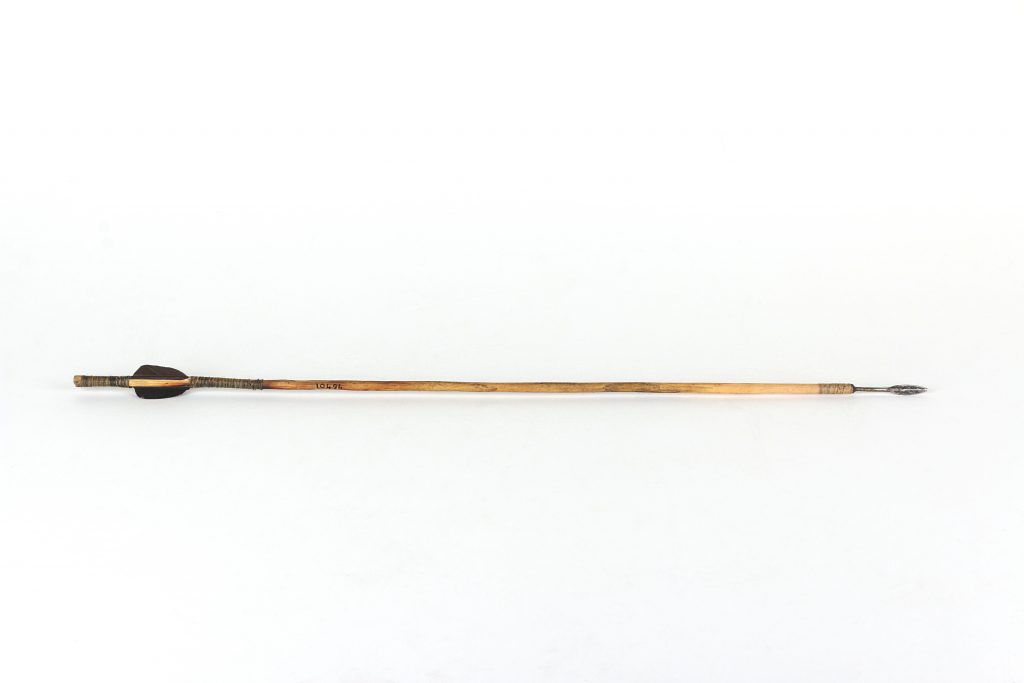
Listen to the pronunciation
| What is this? | Arrow |
| isiZulu Name | Umcibisholo |
| isiXhosa Name | Not yet documented. |
| English Name | Arrow |
| Which cultural group created this? | Zulu |
| Who made this? | Not yet documented. |
| When was it made? | Not yet documented. |
| Where was it made? | Probably KwaZulu-Natal |
| Measurements | Not yet documented. |
| How was it made and what is it made of? | Wooden shaft, metal arrowhead, vegetal (?) strings, fletching made with animal feathers. |
| What colour is it? | Saft: yellow and light brown Arrowhead: silver Fletching: black |
| What sound does it make? | Not yet documented. |
| Physical description | Arrow with wooden shaft, metal arrowhead, and fletching made with animal feathers. String (vegetal?) around the ends (near the arrowhead and before and after fletching). Numbers handwritten in shaft. |
| Where is it now? | Iziko Museum, Cape Town, South Africa. Museum ID: SAM 10496 |
| How did it get there? | Not yet documented. |
| Why is it important? | Arrow made of wood, metal, and feathers. It is made in a way that when it enters the flesh of the animal, it stays there and does not slip out. It has the spear’s shape because it makes it easier to store and keep the poison during the hunt. Arrows fall into the category of projectile technologies. They are particularly significant because they improved the way humans could hunt, not having to interact with animals at such close proximity. Sometimes arrows had poison on the arrowhead. This kind of object has been used by many cultures and tracks back 100,000 years, some of the earliest in South Africa (from sites like Pinnacle Point and in Northern Cape). In the archaeological record, organic material is rarely preserved. Most of the time, just the arrowhead is preserved when it is made of metal or stone. Sometimes, the arrowhead is made with an inongu from the porcupine or be a continuation of the shaft (wooden). |
| Notes | Not yet. |
| References | Amagugu Ethu Workshop, Recording STE021, min. 39:08 to 46:06: Smangaliso Makhalima and Thandi Nxumalo. |
| Who described this? | Described during the Amagugu Ethu Workshop by Smangaliso Makhalima and Thandi Nxumalo. Described for the website by Clara Giménez-Delgado (August 19, 2020). |